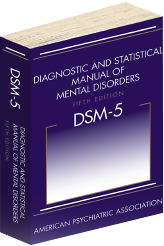Gambling Disorder to Be Included in Addictions Chapter
Abstract
Research indicates that gambling and substance-related and addictive disorders share a common reward-system neurocircuitry and behavioral patterns.

Gambling disorder will take its place among substance-related and addictive disorders in DSM-5, which will be published next month.
The new disorder replaces what was previously called pathological gambling in the “Impulse-Control Disorders Not Elsewhere Classified” section of earlier editions. While the criteria are nearly identical, the inclusion of the disorder with substance-related disorders reflects evidence showing the similarity of reward-related neurocircuitry and behavior patterns of addictive gambling to those of other substance-related addictions.
“The idea of a non-substance-related addiction may be new to some people, but those of us who are studying the mechanisms of addiction find strong evidence from animal and human research that addiction is a disorder of the brain reward system, and it doesn’t matter whether the system is repeatedly activated by gambling or alcohol or another substance,” said Charles O’Brien, M.D., chair of the DSM-5 Work Group on Substance-Related and Addictive Disorders. “In functional brain imaging—whether with gamblers or drug addicts—when they are showed video or photograph cues associated with their addiction, the same brain areas are activated,” he explained.
The addition of gambling disorder and its inclusion with substance-related disorders is the most prominent change to the 16th chapter that will appear in Section II of the new DSM. The multiaxial system of previous editions has been eliminated, and chapters are now arranged according to a “lifespan,” or developmental, approach—disorders affecting children appearing first and those more common in older individuals appearing later.
DSM-5 consists of three sections: Section I gives an introduction with instructions on how to use the manual; Section II outlines the categorical diagnoses according to a revised chapter organization that eliminates the multiaxial system; and Section III includes conditions that require further research before their consideration as formal diagnoses, as well as cultural formulations and other information.
In an interview with Psychiatric News, O’Brien said clinicians will see two important changes to the criteria for all disorders listed in the chapter—the inclusion of “craving” as a symptom, and the elimination of “recurrent legal problems” as a criterion.
More generally, the criteria in the chapter no longer include “dependence” and “abuse” as separate entities. “Dependence is a normal physiological reaction that can occur with many medications or substances in which the effect diminishes with time and repetition,” he said. “It’s been the cause of problems because sometimes pain medications or antidepressants have been withheld from patients because they were told they were—or believed themselves to be—‘dependent.’ ”
And O’Brien said the term “abuse” is clinically meaningless, noting that “abuse, dependence, and addiction are all one continuous variable.”
Rather, severity is rated in DSM-5 on the number of criteria endorsed: two or three criteria indicate a mild disorder; four or five criteria, a moderate disorder; and six or more, a severe disorder. (The threshold for diagnosis of all the substance-related and addictive disorders is two or more criteria, in contrast to a threshold of one or more criteria for a diagnosis of DSM-IV substance abuse and three or more for DSM-IV substance dependence.)
Cannabis withdrawal is a new diagnosis in DSM-5, as is caffeine withdrawal (which in DSM-IV was in Appendix B, “Criteria Sets and Axes Provided for Further Study”). Early remission from a DSM-5 substance use disorder is defined as at least three but less than 12 months without substance use disorder criteria (except craving), and sustained remission is defined as at least 12 months without criteria (except craving).
Other new DSM-5 specifiers include “in a controlled environment” and “on maintenance therapy.” O’Brien said these are to designate individuals whose addiction is in remission in a treatment setting or who are on methadone or other maintenance therapy.
Finally, the DSM-IV specifier for a physiological subtype has been eliminated, as has the DSM-IV diagnosis of polysubstance dependence. “Polysubstance dependence wasn’t clinically useful,” O’Brien said. “So many substance abusers use more than one substance, and gamblers often have accompanying problems with alcohol or drugs.” ■
Additional information is posted at http://www.psychiatry.org/dsm5, including a fact sheet and video on substance use disorder and videos on how to diagnose substance use disorder and the impact of the new criteria on the number of people diagnosed with a substance use disorder.
Gambling disorder is included in DSM-5, replacing pathological gambling in the “Impulse-Control Disorders Not Elsewhere Classified” section of earlier editions. | |||||
Inclusion of gambling with substance-related disorders reflects research evidence showing that reward-related neurocircuitry and behavior patterns of addictive gambling are similar to those of substance-related addictions. | |||||
Craving has been added to criteria, and recurrent legal difficulties has been eliminated. | |||||
Criteria in the chapter no longer include dependence and abuse as separate entities; abuse, dependence, and addiction are viewed as one continuous variable. | |||||
The threshold for diagnosis of substance-related and addictive disorders is two or more criteria, in contrast to a threshold of one or more criteria for a diagnosis of DSM-IV substance abuse and three or more for DSM-IV substance dependence. | |||||
The DSM-IV specifier for a physiological subtype has been eliminated, as has the diagnosis of polysubstance dependence. | |||||



